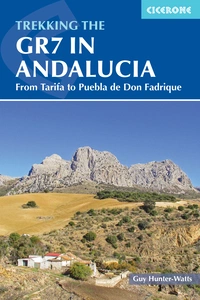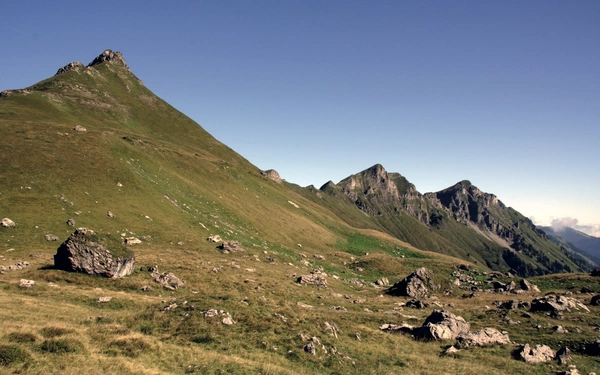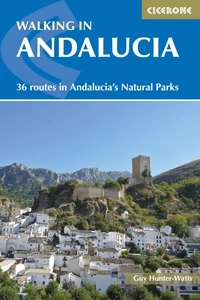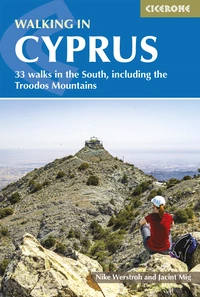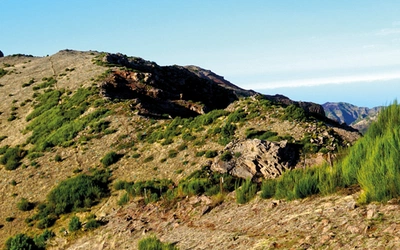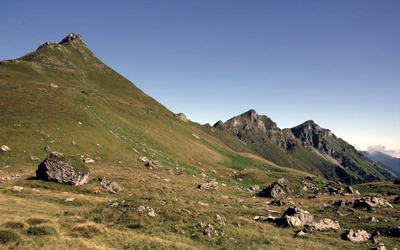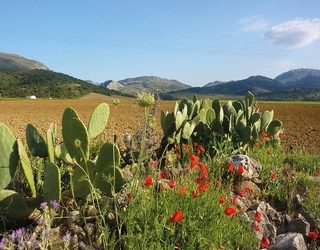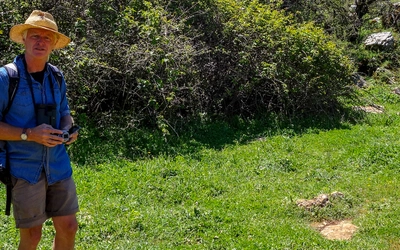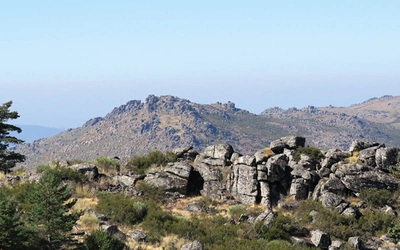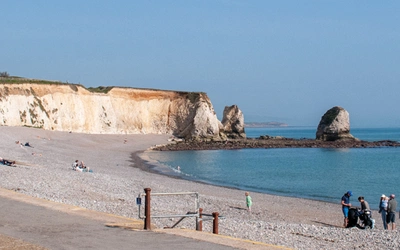An introduction to the GR7 Route in Andalucía
When Spain and long-distance treks come to mind, the thoughts of many walkers will invariably turn to the Camino and the network of paths leading to Santiago de Compostela. The GR7 footpath receives far less press and sees far fewer walkers, yet the 1250 kilometres of its trail as it passes through Andalucia easily vies in beauty with those of the Camino while offering one of Europe’s most challenging and inspirational on-foot adventures. The GR7 introduces you to a myriad of landscapes as it runs west to east across southern Spain, linking several of the region’s most beautiful protected areas.
Trekking the GR7 in Andalucia
From Tarifa to Puebla de Don Fadrique
£18.95
Guidebook to the Andalucian section of the GR7 long-distance hiking trail in Spain, from Tarifa to Puebla de Don Fadrique. Includes a northern route via Cordoba Province and southern route via Granada Province. The whole 750km trail takes 34-42 days to complete but can be split into shorter sections.
More information
What is the GR7?
The E4, or the GR7, is the longest of 12 E-paths in Europe. It originally ran from Tarifa in southern Spain to Delphi in Greece. After crossing Andalucía and running up the eastern side of Spain via Murcia, Valencia and Catalonia the GR7 enters France via Andorra. Leaving France, now waymarked as simply E4, it passes through Switzerland, Germany, Austria, Hungary, Serbia and Bulgaria before running south into Greece. Variants have recently been added that extend the E4 further south into Morocco, Crete and Cyprus and, at the other end, west along the Algarve to Cabo São Vicente in Portugal. The total length of the route is now approximately 12,000 kilometres.
Why should you walk the Andalucia section?
Andalucía occupies around one-fifth of the Spanish mainland, flanked by the Mediterranean Sea and the Atlantic Ocean. It encompasses eight provinces that stretch from the Portuguese border in the west to its border with Murcia in the east. One of the many attractions of the GR7 is acquainting yourself with untouristy villages and towns that are way off-piste and where your welcome is likely to be warm and genuine, despite Andalucia being one of Europe's most popular holiday destinations. There are also excellent links via road and rail, including a high-speed train with Madrid, while Málaga is one of Europe’s busiest regional airports with links to every major airport in the UK.
Where does GR7 in Andalucía start and end?
The GR7 is made up of 3 sections: the initial common stages, the northern variant and the southern variant. The common route begins in Tarifa, passing through the Cadiz and Malaga provinces, before dividing into the northern and southern variants at the tiny hamlet village of Villanueva de Cauche. The northern route crosses the vast olive belt that stretches from Antequera to the eastern reaches of Andalucía, gathering momentum and beauty as it leads on through the wild landscapes of the Sierra de Mágina Natural Park before traversing the mountains of the Sierra de Cazorla Natural Park to reach Puebla de Don Fadrique, the endpoint of the GR7 in Andalucía. Alternatively, the southern route passes through the Malaga and Granada provinces, sticking to the Penibetic range. Running east along the Lecrín Valley, it reaches the Sierra Nevada, home to mainland Spain’s highest mountains and villages.
How long is the route?
The common stage totals 285km and can be walked in 13 to 17 days. The complete northern variant – that’s with the common stage added on – is 738km and takes between 34 and 41 days. The complete southern variant is 770km and requires between 35 and 42 days of walking.
| Variant | Distance (km) | Days |
|---|---|---|
| Common route | 284.8 | 13 - 17 |
| Northern route | 453.3 | 21 - 24 |
| Southern route | 485.8 | 22- 25 |
| Common + northern route | 738.1 | 34 - 41 |
| Common + southern route | 770.3 | 35 - 42 |
Can the route be easily split into sections?
This challenging long-distance trail that can be broken up into shorter sections. The author's top choices for a week of hiking along the route include Tarifa to Ronda, Niguelas to Laroles, La Calahorra to Puebla de Don Fadrique or Alhama de Granda to La Calahorra. These routes can be tackled using the information in the guidebook, with details of local transport links in each provincial chapter introduction.
When is the best time to walk?
Generally, the best time to walk in Andalucía is from March through to mid-June and from September to late October. This is when you’re most likely to encounter mild, sunny weather: warm enough to eat al fresco meals midday yet not so hot as to make temperature an additional challenge. Wildflowers are at their brilliant best in late April/early May. If you’re prepared to risk rain, winter can be a wonderful time to hike, especially from December to February, when rainfall is generally less than in November, March, and April. Hotel prices also tend to be lower in the low season. But bear in mind that Las Alpujarras, the Sierra Nevada, and the Sierras of Mágina and Cazorla can see heavy snowfall during this period. If you plan to walk in these areas in winter, always check the long-term weather forecast.
How do you get to the start?
Gibraltar is the closest airport to the GR7’s start point and has regular flights from several cities in the UK with British Airways and Easyjet. A taxi from the Spanish side of the border in La Línea to Tarifa costs about €60. The bus transfer – six buses daily – takes an hour and costs €5. Other options include Jerez, which is served by RyanAir and Easyjet and is an hour's drive from the start point, or Seville and Malaga, which are two hours away. You would need to take a bus to La Linea and then to Tarifa if travelling via public transport from Malaga.
What about luggage transfers?
There are no companies offering luggage transfers along the GR7. However, there is the option of using taxi services, which allows the luxury of walking from village to village with only a day pack. Taxi contact numbers can be often found in village boxes and hotels are usually willing to help out.
Where can you stay on the GR7?
Accommodation options vary between hotels and apartments and more basic hostels which are listed within the guidebook. Town hall websites often list the accommodation on offer in their particular village, too. It isn’t possible to do the GR7 as a campsite-to-campsite trek, so if you wish to use a tent for the whole route, this will entail wild camping on most nights. Wild camping is generally tolerated in Andalucía, and you can always find places to pitch a tent close to the end point of all stages. However, wild camping is not permitted in the natural parks through which the walk passes, while in all other places, you will always find a quiet and beautiful place to pitch a tent. That said, with planning, there’s no need to carry camping gear.

